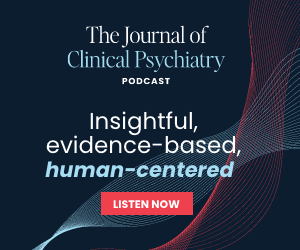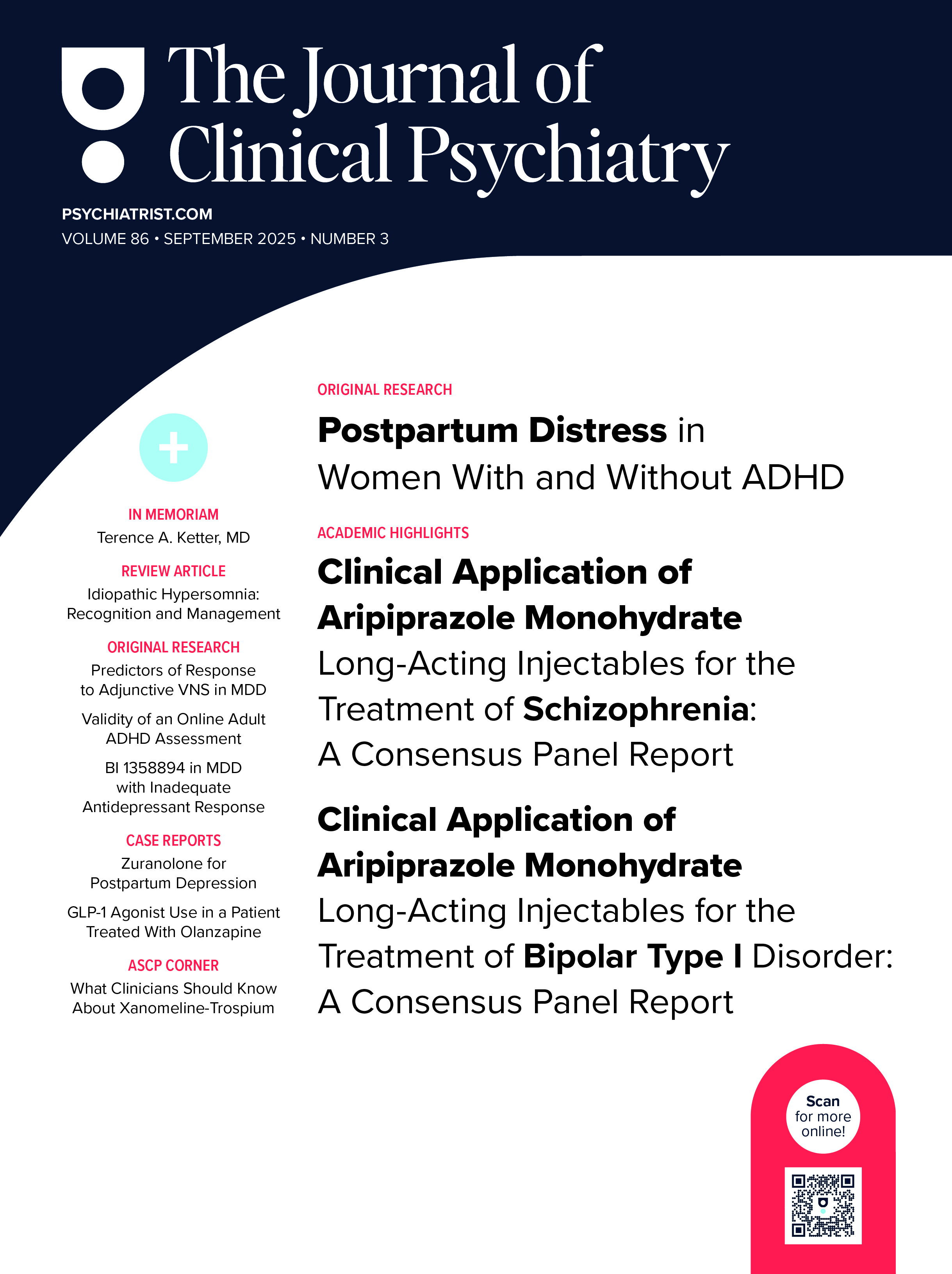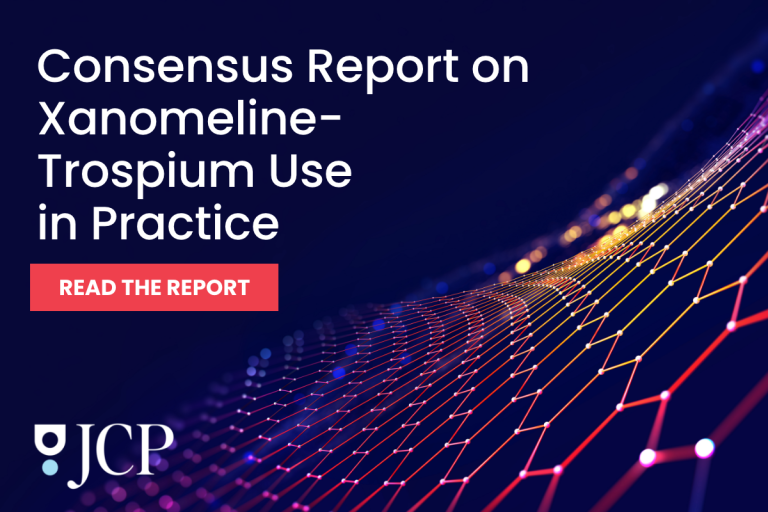
Abstract
Objective: Lurasidone, a second-generation atypical antipsychotic, lacks significant published data on its transfer into human milk during lactation. The objective of this study was to (1) quantify the transfer of lurasidone into human milk, allowing for an estimation of maternal drug exposure to the breastfed infant and (2) report observations of infants exposed to lurasidone via breast milk.
Methods: Milk samples and health histories were collected from 9 lactating mothers who donated milk samples to the InfantRisk Human Milk Biorepository while taking lurasidone (20–80 mg/day) from 2022 to 2024. The drug concentration-time profile of lurasidone in milk was determined using liquid chromatography–mass spectrometry, and maternal lurasidone doses were standardized to 40 mg/day.
Results: Lurasidone had an average milk concentration of 39.5 ng/mL at the 40 mg/day standardized dose. The relative infant dose (RID) was 1.16%, which is below the standard 10% threshold for infant safety. Even using the highest observed individual concentration of 174 ng/mL, the calculated RID was 3.03%. There were no maternal reports of adverse effects in the infants exposed to varying degrees of lurasidone in milk.
Conclusion: The levels of lurasidone observed in all participants’ milk samples were exceedingly low. The subsequently low RID is below the 10% threshold for infant safety, suggesting that the transfer of maternal lurasidone into human milk is clinically insignificant and poses minimal risk to a breastfed infant.
J Clin Psychiatry 2025;86(4):25m15955
Author affiliations are listed at the end of this article.
Members Only Content
This full article is available exclusively to Professional tier members. Subscribe now to unlock the HTML version and gain unlimited access to our entire library plus all PDFs. If you’re already a subscriber, please log in below to continue reading.
References (34)

- Merikangas KR, Jin R, He JP, et al. Prevalence and correlates of bipolar spectrum disorder in the world mental health survey initiative. Arch Gen Psychiatry. 2011;68(3):241–251. PubMed CrossRef
- Masters GA, Hugunin J, Xu L, et al. Prevalence of bipolar disorder in perinatal women: a systematic review and meta-analysis. J Clin Psychiatry. 2022;83(5):21r14045. PubMed CrossRef
- Davanzo R, Bua J, De Cunto A, et al. Advising mothers on the use of medications during breastfeeding: a need for a positive attitude. J Hum Lact. 2016;32(1):15–19. PubMed CrossRef
- Jayawickrama HS, Amir LH, Pirotta MV. GPs’ decision-making when prescribing medicines for breastfeeding women: content analysis of a survey. BMC Res Notes. 2010;3:82. PubMed CrossRef
- Toh S, Li Q, Cheetham TC, et al. Prevalence and trends in the use of antipsychotic medications during pregnancy in the U.S., 2001-2007: a population-based study of 585,615 deliveries. Arch Womens Ment Health. 2013;16(2):149–157. PubMed CrossRef
- Petersen I, McCrea RL, Osborn DJ, et al. Discontinuation of antipsychotic medication in pregnancy: a cohort study. Schizophr Res. 2014;159(1):218–225. PubMed CrossRef
- Viguera AC, Vanderkruik R, Gaccione P, et al. Breastfeeding practices among women taking second-generation antipsychotics: findings from the National Pregnancy Registry for Atypical Antipsychotics. Arch Womens Ment Health. 2022;25(2):511–516. PubMed CrossRef
- Viguera AC, Whitfield T, Baldessarini RJ, et al. Risk of recurrence in women with bipolar disorder during pregnancy: prospective study of mood stabilizer discontinuation. Am J Psychiatry. 2007;164(12):1817–1923. PubMed CrossRef
- Solé E, Torres A, Roca A, et al. Obstetric complications in bipolar disorder: the role of mental health disorders in the risk of caesarean section. J Affect Disord. 2019;252:458–463. PubMed
- Miller ES, Metz T, Moore-Simas TA, et al. Treatment and management of mental health conditions during pregnancy and postpartum: ACOG Clinical Practice Guideline No. 5. Obstet Gynecol. 2023;141(6):1262–1288. PubMed
- Latuda (lurasidone). Package insert. Sunovion Pharmaceuticals Inc.; 2018.
- Feng Y, Shi J, Wang L, et al. Randomized, double-blind, 6-week non-inferiority study of lurasidone and risperidone for the treatment of schizophrenia. Psychiatry Clin Neurosci. 2020;74(6):336–343. PubMed CrossRef
- Agapoff JR, Olson DJ, White S, et al. Rapid and sustained resolution of risperidone associated hyperprolactinemia and galactorrhea with low-dose lurasidone. J Clin Psychopharmacol. 2020;40(4):410–412. PubMed CrossRef
- Keightley P, Schmidt Sotomayor N, O’Hara K, et al. Lurasidone in lactation: a case study with laboratory and clinical outcomes. Aust N Z J Psychiatry. 2020;54(10):1035–1036. PubMed CrossRef
- Montiel C, Newmark RL, Clark CT. Perinatal use of lurasidone for the treatment of bipolar disorder. Exp Clin Psychopharmacol. 2022;30(2):249–252. PubMed CrossRef
- Clinical lactation studies: considerations for study design. U.S. Food and Drug Administration; 2020. Accessed May 6, 2025. https://www.fda.gov/regulatory-information/search-fda-guidance-documents/clinical-lactation-studies-considerations-study-design. PubMed CrossRef
- Anderson PO. Antidepressants and breastfeeding. Breastfeed Med. 2021;16(1):5–7. PubMed CrossRef
- Cohen LS, Church TR, Freeman MP, et al. Reproductive safety of lurasidone and quetiapine: update from the National Pregnancy Registry for Psychiatric Medications. J Womens Health (Larchmt). 2023;32(4):452–462. PubMed CrossRef
- Pathirana MM, Andraweera PH, Aldridge E, et al. The association of breast feeding for at least six months with hemodynamic and metabolic health of women and their children aged three years: an observational cohort study. Int Breastfeed J. 2023;18(1):35. PubMed CrossRef
- Pillinger T, McCutcheon RA, Vano L, et al. Comparative effects of 18 antipsychotics on metabolic function in patients with schizophrenia, predictors of metabolic dysregulation, and association with psychopathology: a systematic review and network meta-analysis. Lancet Psychiatry. 2020;7(1):64–77. PubMed CrossRef
- Gentile S. Infant safety with antipsychotic therapy in breast-feeding: a systematic review. J Clin Psychiatry. 2008;69(4):666–673. PubMed CrossRef
- Hale TW, Krutsch K. Hale’s Medications & Mothers’ Milk 2025–2026: A Manual of Lactational Pharmacology. 21st ed. Springer Publishing Company; 2024.
- Caplyta (lumateperone). Package insert. Intra-Cellular Therapies Inc.; 2023.
- Seroquel (quetiapine). Package insert. AstraZeneca Pharmaceuticals. LP; 2013.
- Croke S, Buist A, Hackett LP, et al. Olanzapine excretion in human breast milk: estimation of infant exposure. Int J Neuropsychopharmacol. 2002;5(3):243–247. PubMed CrossRef
- Gardiner SJ, Kristensen JH, Begg EJ, et al. Transfer of olanzapine into breast milk, calculation of infant drug dose, and effect on breast-fed infants. Am J Psychiatry. 2003;160(8):1428–1431. PubMed CrossRef
- Lutz UC, Wiatr G, Orlikowsky T, et al. Olanzapine treatment during breast feeding: a case report. Ther Drug Monit. 2008;30(3):399–401. PubMed CrossRef
- Aydin B, Nayir T, Sahin S, et al. Olanzapine and quetiapine use during breastfeeding: excretion into breast milk and safe breastfeeding strategy. J Clin Psychopharmacol. 2015;35(2):206–208. PubMed CrossRef
- Manouilenko I, Öhman I, Georgieva J. Long-acting olanzapine injection during pregnancy and breastfeeding: a case report. Arch Womens Ment Health. 2018;21(5):587–589. PubMed CrossRef
- Weissman AM, Levy BT, Hartz AJ, et al. Pooled analysis of antidepressant levels in lactating mothers, breast milk, and nursing infants. Am J Psychiatry. 2004;161(6):1066–1078. PubMed CrossRef
- Heikkinen T, Ekblad U, Palo P, et al. Pharmacokinetics of fluoxetine and norfluoxetine in pregnancy and lactation. Clin Pharmacol Ther. 2003;73(4):330–337. PubMed CrossRef
- Symbyax (olanzapine and fluoxetine). Eli Lilly and Company; 2009.
- Moretti ME, Koren G, Verjee Z, et al. Monitoring lithium in breast milk: an individualized approach for breast-feeding mothers. Ther Drug Monit. 2003;25(3):364–366. PubMed CrossRef
- Bartick MC, Schwarz EB, Green BD, et al Suboptimal breastfeeding in the United States: maternal and pediatric health outcomes and costs [published correction appears in Matern Child Nutr. 2017;13(2):null]. Matern Child Nutr. 2017;13(1):e12366. PubMed CrossRef





